More than 700 types of bacterial species live in the mouth making brushing your teeth imperative for oral health. Even if you’ve been brushing your teeth every day for years, there’s a chance that you might not be brushing your teeth as well as you should. Here are some tips on how to brush your teeth correctly.
Brush your teeth twice a day
Don’t rush when you brush. You might wonder, how long should you brush your teeth? Set a “toothbrush timer” on your phone for at least two minutes each time your brush, preferably at morning and night. Pay special attention to hard-to-reach back teeth and areas around fillings, crowns, or other dental restoration. Be gentle with your brush and avoid scrubbing your teeth but think more along the lines of brushing or massaging.
It’s all about the technique
According to the Mayo Clinic, you should hold your toothbrush at a 45-degree angle and aim the bristles toward the area where your teeth meet your gums. Gently brush with short back-and-forth and circular motions. Brush the outside, inside and chewing surfaces of your teeth and find the technique that’s best for your mouth and dental structure. Make sure to brush the gum line where bacteria tends to hangs out!
Choose the right brush
There is such a large selection of toothbrushes at the store that it’s hard to know what to grab. Find a soft-bristled toothbrush with a small head and flexible handle to best remove bacteria and debris from your teeth and gums. The tougher the bristles are doesn’t necessarily mean the tougher they clean. Hard bristles can actually wear down your teeth and lack the flexibility and bend of soft bristles to get under the gum line. Small-headed brushes can easily get to hard-to-reach places and work with smaller mouths. Whether you decide to go for the manual or electric route, your brush must be soft-bristled. Look for the American Dental Association seal of approval to ensure efficacy and quality.
Manual or electric toothbrush?
Consider using an electric or battery-operated toothbrush which can help reduce plaque and gum disease more than manual brushing. An electric brush is also helpful if you have a condition such as arthritis which makes brushing motions difficult.
Use a fluoride toothpaste
Not all toothpastes are created equal! Designed for conditions like cavities, tartar, gingivitis, stained teeth and sensitivity, there are a variety of toothpastes to choose from in the oral health care aisle. Look for a toothpaste that has fluoride in it which strengthens tooth enamel and prevents tooth decay. Find a toothpaste that’s right for you and your dental health and ask your dentist for recommendations.
Wait 15-20 minutes before brushing
Don’t rush to the restroom at work to brush your teeth after you’ve finished lunch. The acid that is present on your teeth after eating can turn into an abrasive while brushing, aiding the acid in teeth erosion. Let your saliva do some work in your mouth before grabbing your brush or at least rinse out your mouth with water before brushing your pearly whites.
Keep your toothbrush clean
Rinse your toothbrush with water after brushing and store it in an upright position, allowing it to air dry. Routinely covering your toothbrush or keeping it in a closed container can promote the growth of bacteria, yeast and mold. Separate your toothbrush from other toothbrushes to prevent cross-contamination and replace it when necessary.
Replace your toothbrush often
Replace your toothbrush or brush head at least every 3-4 months. Buy a new brush sooner if the bristles become discolored, frayed, or dirty looking. Throw away your brush after you’ve been sick as the collection of germs on the bristles could lead to reinfection.
Don’t forget to brush your tongue!
Bad breath is the primary problem that’s associated with not brushing your tongue. Brushing your tongue not only promotes good breath but it removes bacteria that hides between taste buds and in the crevices and structural changes of the tongue. When your taste buds become covered with bacteria, it can lead to a minimized sense of taste. Swishing water or mouthwash around won’t do the trick but you don’t need a fancy tongue scraper, either. Just your toothbrush will do!
Visit your dentist
Schedule regular dental cleanings and exams at least twice per year. Contact your dentist if you see any changes in your teeth or jaw or unusual sensitivity, pain or swelling.
Dental health is not just about the prevention of bad breath. Taking proper care of your teeth can lead to an overall healthy well-being.

